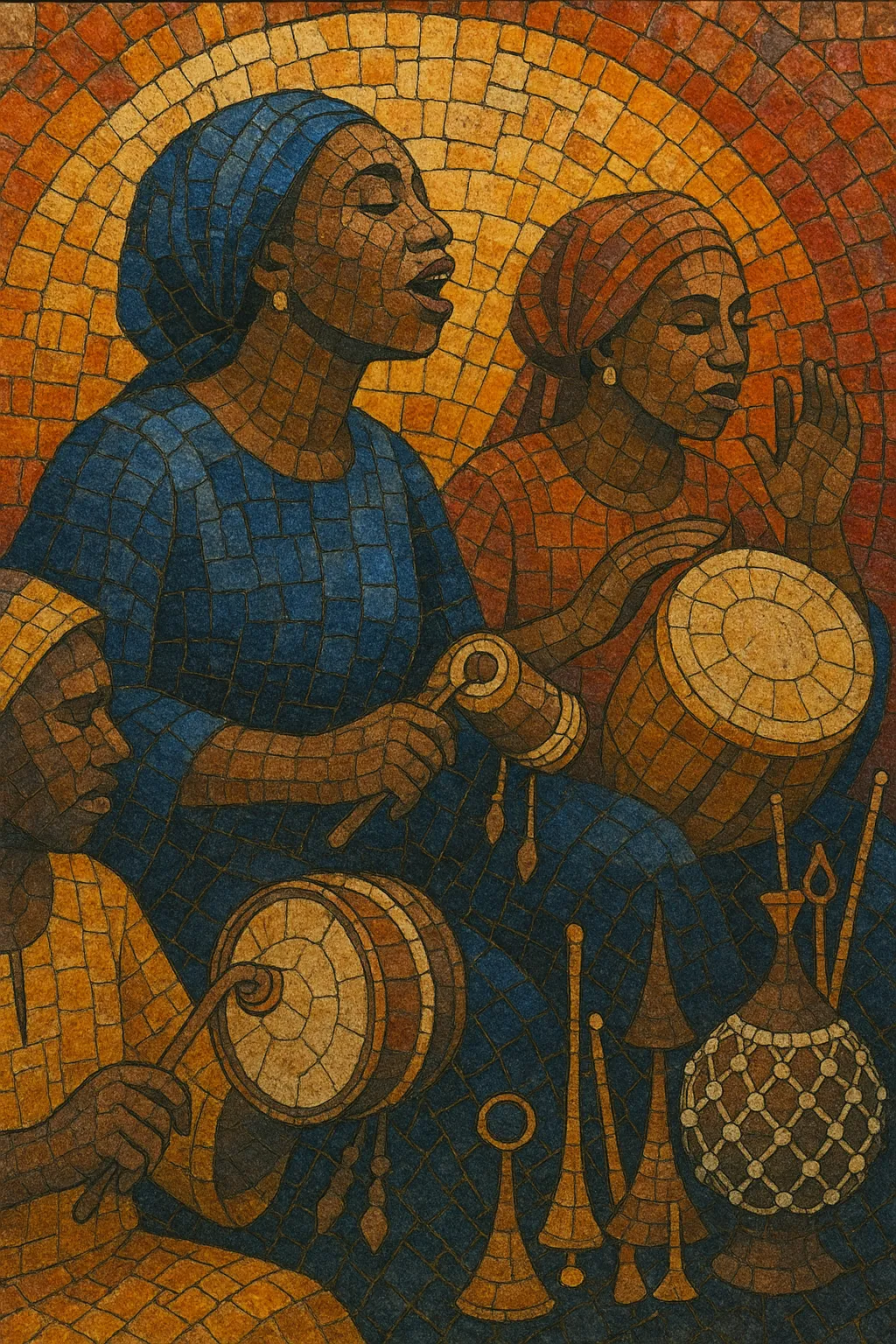Waka is a Yoruba, women-led popular music of southwestern Nigeria with strong Islamic orientation. It combines melismatic lead vocals, call-and-response choruses, and vibrant Yoruba percussion to create a danceable yet devotional sound.
The core sound centers on talking drums (gangan/dundun), frame drums (sakara), shekere rattles, and agogo bells, with flexible tempos that often sit in swung 4/4 or lilting 12/8. Lyrics blend oríkì (Yoruba praise poetry), moral instruction, social commentary, and expressions of Muslim piety, frequently interweaving Yoruba with Arabic phrases.
Historically performed by female ensembles at weddings, naming ceremonies, religious festivities, and community celebrations, Waka helped establish a template later adapted by related Yoruba genres, and it remains a ceremonial and popular touchstone in Yoruba Muslim communities.
Waka emerged among Yoruba Muslim women in the urban centers of southwestern Nigeria (notably Lagos and Ibadan) in the early to mid 20th century. Drawing on Islamic recitation, Yoruba praise-singing traditions, and local percussion practices, early ensembles developed a portable, event-ready music for ceremonies and communal gatherings. By the 1940s, pioneering singers such as Batile Alake were shaping a distinct Waka repertoire and performance style.
As recording opportunities expanded in West Africa, Waka artists began to appear on 78 rpm and later LP releases. Amplification and studio recording encouraged tighter arrangements, clearer call-and-response sections, and more standardized percussion batteries (talking drums, sakara frames, shekere, and bells). Waka’s ceremonial roots remained central, but the music became increasingly present on radio and in commercial venues.
The 1970s and 1980s saw Waka’s broad popularization, led most visibly by Queen Salawa Abeni, whose recordings and touring helped bring the genre into national consciousness. While preserving its female-led vocal aesthetics and devotional themes, Waka also embraced modern stagecraft and band formats, expanding its audience beyond strictly ceremonial contexts.
Waka predates and overlaps with other Yoruba Muslim-linked styles. It shares percussive roots with Apala and, crucially, influenced the emergence and phrasing of Fuji (which evolved from were/ajisari Ramadan wake-up music). Waka’s call-and-response and praise-singing ethos also resonated with Juju-era concert formats, fostering a broader ecosystem of Yoruba popular music.
Although Fuji and other styles came to dominate mainstream charts in the 1990s, Waka remains vital at Yoruba Muslim social functions and continues to be recorded and performed. Newer artists uphold the tradition while some incorporate modern production touches, ensuring the genre’s ongoing ceremonial and cultural relevance at home and in the diaspora.


